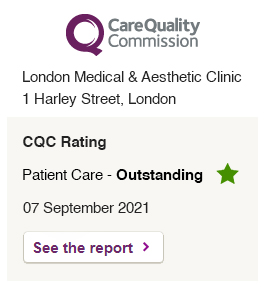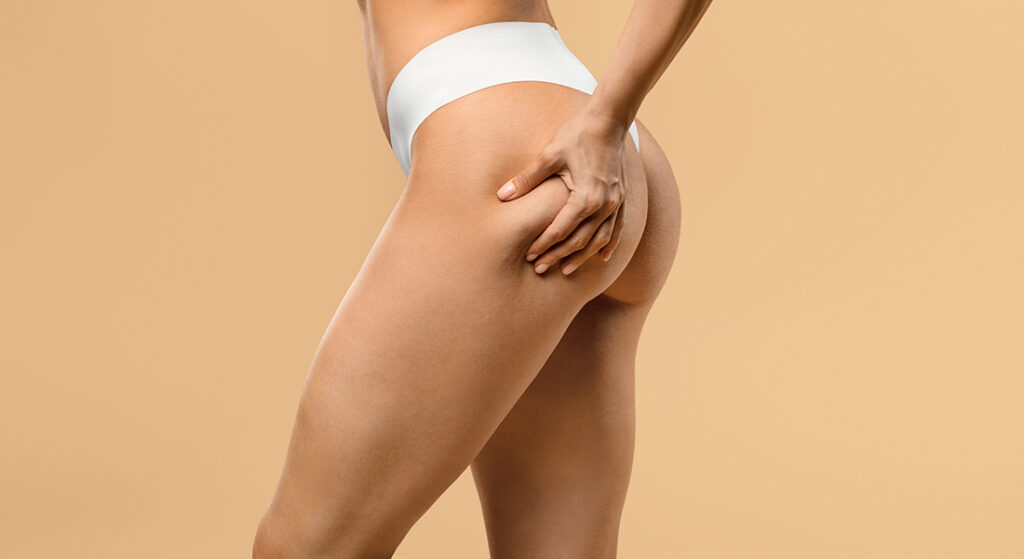
If you’re tired of dimples, lumps, or uneven texture on your thighs or buttocks, you’ve probably heard about Cellulaze, one of the most advanced treatments available for long-term cellulite reduction.
But one of the most common questions patients ask is:
“How many Cellulaze treatments will I need before I see real results?”
The short answer is most patients only need one session to achieve significant, lasting improvement. However, the full answer depends on several factors such as the severity of your cellulite, your skin’s elasticity, and your personal goals.
In this article, we’ll walk you through how the treatment works, how many sessions are typically required, when results appear, and what to expect during your Cellulaze journey.
What Is Cellulaze?
Cellulaze is an FDA-approved minimally invasive laser treatment designed to target the structural causes of cellulite beneath your skin.
Unlike creams or massage-based therapies, which only address surface appearance, Cellulaze goes deeper literally.
It works by releasing the fibrous bands under the skin that create dimpling, melting excess fat, and stimulating collagen for a smoother, firmer texture.
How It Works
– Local anaesthetic is applied to keep you comfortable.
– A fine laser fibre is inserted under the skin through a tiny incision.
The laser energy:
1. Breaks the fibrous bands causing dimples
2. Melts small pockets of fat
3. Tightens the skin by boosting collagen and elastin
The result? A smoother, more sculpted surface that lasts for years not months.
How Many Cellulaze Treatments Do You Need?
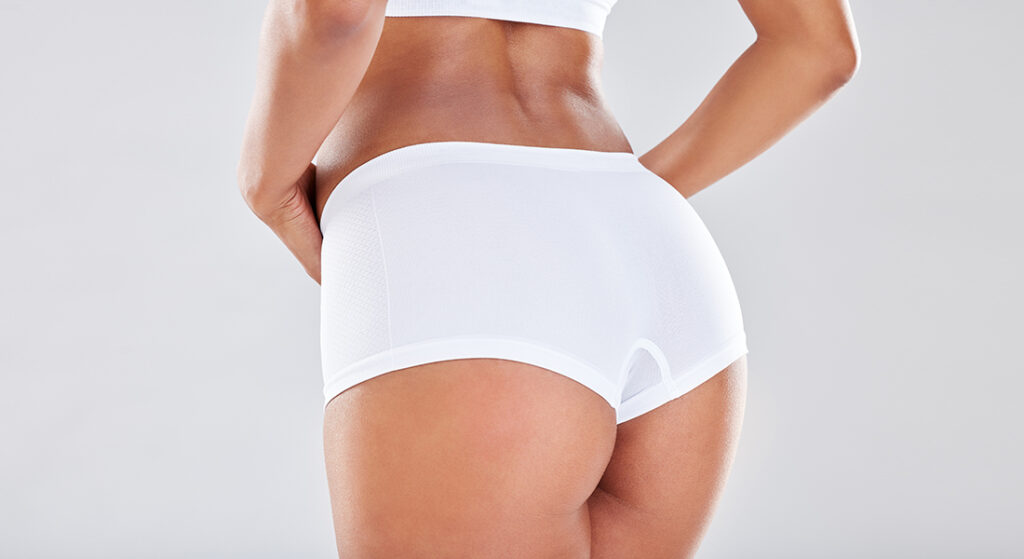
In most cases, just one Cellulaze session is enough to produce visible and lasting results.
That’s one of the biggest reasons why it’s considered a breakthrough in cellulite treatment it addresses the root causes instead of offering short-term surface smoothing.
However, you may need a second treatment if:
– Your cellulite is severe or long-standing
– You want to target multiple areas (e.g. thighs, buttocks, abdomen)
– You have low skin elasticity due to age or weight changes
– You want additional skin tightening for refinement
For the majority of patients, your clinician will reassess results after 6 to 12 months to decide whether a follow-up session could enhance or maintain the outcome.
Why One Treatment Is Often Enough
The reason a single Cellulaze session delivers such strong results lies in how the laser works below the surface.
It doesn’t just smooth out dimples it reshapes your skin’s entire structure by:
– Cutting the fibrous septae (the tough connective tissue that tugs skin down)
– Melting trapped fat to reduce bulges
– Thickening and tightening the skin from the inside out
Since collagen continues to rebuild for several months, your results improve gradually meaning you keep seeing progress long after the treatment.
What to Expect During Your Treatment
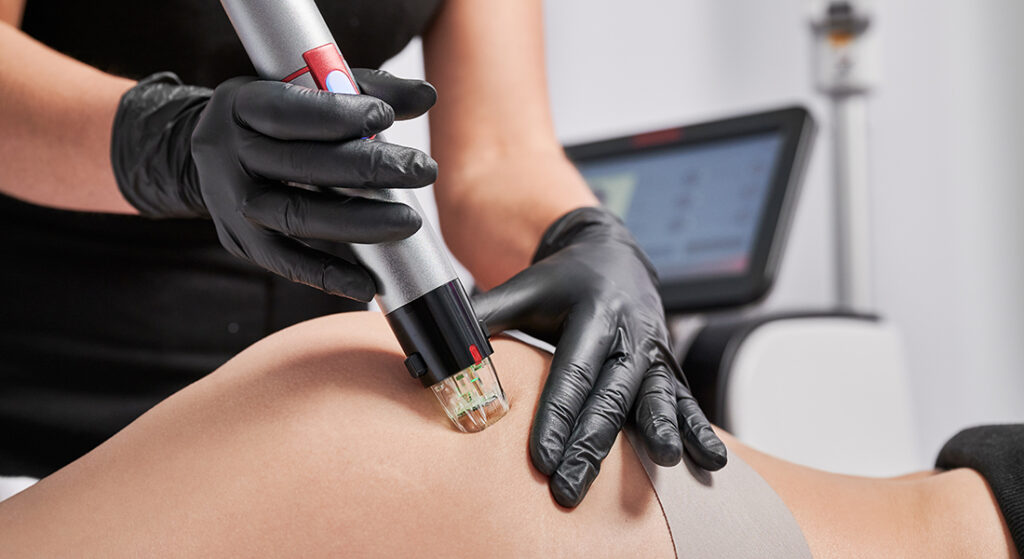
Each Cellulaze session is typically completed in 60–90 minutes, depending on the size of the area.
Step-by-Step Overview
1. Consultation – Your practitioner evaluates your skin and marks the treatment zones.
2. Anaesthesia – Local numbing ensures comfort throughout.
3. Laser Treatment – The laser fibre is inserted beneath your skin via a microcannula.
4. Tissue Sculpting – The laser releases bands, melts fat, and tightens skin simultaneously.
5. Recovery – You’ll wear a compression garment for a few days to support healing.
Afterward, you can go home the same day no overnight stay required.
How Soon Will You See Results?
You’ll start to notice subtle improvements within the first few weeks after your treatment. Initially, any bruising or swelling will begin to fade, and your skin will already feel a little smoother.
By around four to six weeks, you’ll likely see a visible reduction in dimpling and uneven texture. As your body continues to produce new collagen, the changes become more noticeable.
After about three months, your skin’s firmness and tightness will improve even more as collagen rebuilding continues beneath the surface.
By the six-month mark, you can expect to see the most dramatic results your skin will appear smoother, firmer, and more even overall.
With proper care and a healthy lifestyle, your results can remain stable for a year or even longer.
How Long Do the Results Last?
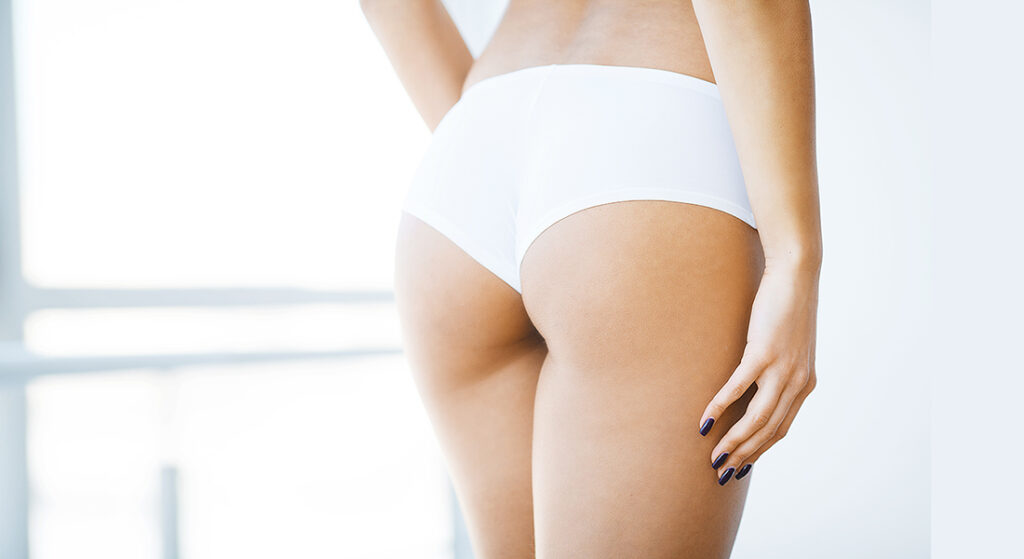
One of the main advantages of Cellulaze is that the results can last three years or more much longer than surface treatments like massage or radiofrequency.
Clinical studies show that skin elasticity continues to improve for up to a year after treatment, and the improvement is maintained with a healthy lifestyle and regular exercise.
Your collagen levels, lifestyle habits, and weight stability all play a role in how long the results last.
It’s also worth noting that while Cellulaze can provide long-lasting improvements, your body will naturally continue to age. This means you might notice gradual changes over time, but the significant smoothing and firming you achieve from the treatment can give you a lasting confidence boost.
Factors That Affect the Number of Sessions
Not everyone’s cellulite behaves the same way, so your dermatologist will customise your Cellulaze plan based on your individual needs.
The severity of your cellulite is one of the main factors. If your dimpling is mild, you may only need a single session to see noticeable improvement. However, if your cellulite is deeper or more uneven, a second touch-up within 12–18 months could help maintain smoother, firmer results.
Your skin quality also plays a big role. Skin that has lost elasticity due to ageing, pregnancy, or significant weight changes may need extra collagen stimulation to achieve the best outcome. Healthier, more resilient skin may respond faster and require fewer sessions.
The size and location of the treatment area can affect how many sessions you need. Treating larger zones, such as both thighs and buttocks, or multiple areas at once may require longer or multiple sessions to ensure even coverage and optimal results.
Lifestyle factors can influence how your skin heals and maintains its new texture. Smoking, dehydration, poor diet, and significant weight fluctuations can slow collagen repair, sometimes making a follow-up session necessary. By keeping a healthy lifestyle, staying hydrated, and maintaining a stable weight, you can help your results last longer and possibly reduce the number of sessions needed.
It’s also important to remember that everyone’s body responds differently. Your dermatologist will monitor your progress and may adjust your plan as needed to make sure you get the most effective, long-lasting results.
Combining Cellulaze with Other Treatments
For even better results, you can combine Cellulaze with other treatments that target different aspects of cellulite.
For example, Velashape can help improve your skin’s texture and circulation and is often used as a maintenance treatment after Cellulaze. If you have hollow or uneven areas, Sculptra, a non-surgical filler, can add volume and smooth out contours.
Radiofrequency (RF) treatments can tighten the surface of your skin and are usually recommended a few months after Cellulaze to refine your results. Microneedling is another option if you still notice minor surface irregularities, as it boosts collagen production in the upper layers of your skin.
Your practitioner will work with you to create a bespoke plan that matches your goals, lifestyle, and skin type, ensuring the best possible outcome.
Is Cellulaze Painful?
Most patients find Cellulaze surprisingly comfortable, thanks to the local anaesthetic used during the procedure. While you’re treated, you might feel a gentle warmth, slight pressure, or a mild tugging sensation, but it’s generally well-tolerated.
After the treatment, it’s normal to experience some minor side effects. You may notice slight swelling or tenderness in the treated areas for a few days, along with mild bruising. Some people describe a feeling similar to muscle soreness, which is part of the skin and tissue adjusting to the treatment.
These effects usually settle within a week, and most patients can return to light daily activities within a day or two. Strenuous exercise or intense physical activity should be avoided for about seven days to allow your skin to heal properly.
It’s also worth remembering that everyone’s pain tolerance is different. If you’re particularly sensitive, your dermatologist can offer tips to make the procedure even more comfortable and ensure your recovery is as smooth as possible. Knowing what to expect ahead of time can make the experience much less stressful and help you feel confident about your results.
Recovery and Aftercare
To get the best results from your Cellulaze treatment and help your skin heal quickly, it’s important to follow your clinician’s post-treatment advice. You’ll likely be asked to wear compression garments for 3–7 days, which helps minimise swelling and supports your skin as it adjusts. Avoid heavy exercise for about a week, giving your body the time it needs to recover fully.
Staying well-hydrated is also key, as collagen formation works best when your skin is nourished from the inside out. If your clinician recommends it, gentle massage can support lymphatic drainage and reduce lingering swelling. Maintaining a stable weight over time will help preserve the smoother contours you’ve achieved with the treatment.
Many patients are pleasantly surprised by how quickly they bounce back. In most cases, you can return to work the next day, and daily activities feel comfortable within just a couple of days. With proper aftercare, your results will last longer and continue to improve as your skin rebuilds collagen and firms up.
Is One Treatment Enough for Everyone?
While most people achieve their goals after one session, your dermatologist or laser specialist may suggest a follow-up for refinement if:
– You have very deep dimples or uneven texture
– Your skin laxity needs more tightening
– You desire further contouring or volume adjustment
These touch-ups are typically shorter and less intense than the initial session.
Realistic Expectations
Cellulaze produces dramatic, long-term improvement but it doesn’t make cellulite disappear entirely. Instead, it reduces the visibility and smooths out uneven texture by addressing the structural causes beneath your skin.
Patients often describe their post-treatment skin as:
– Firmer and tighter
– Smoother and more uniform
– “Airbrushed” compared to before
The key is to maintain realistic expectations Cellulaze provides a 60–80% improvement in most cases, which is significantly higher than surface-level options.
Clinical Evidence
Studies have shown that Cellulaze offers durable, measurable results:
– A study published in Aesthetic Surgery Journal reported that 93% of patients were satisfied with their results a year after treatment.
– Skin elasticity improved by 29% and skin thickness by 25% in clinical trials.
– Results continued to improve for up to 12 months post-treatment.
This evidence supports why most people only need a single session to achieve visible, long-lasting smoothness.
Patient Experience: What It Feels Like
Here’s how most patients describe their journey:
“I tried countless creams and massage treatments, but nothing made a lasting difference. After one Cellulaze session, my thighs looked smoother after about six weeks and the results just kept improving over the next few months. I finally felt confident wearing shorts again!”
This gradual improvement is one of the reasons Cellulaze has such a high satisfaction rate among patients.
The Benefits of Fewer Treatments
Needing only one session offers several advantages:
1. Cost efficiency – You save time and money compared to repeat sessions.
2. Less downtime – Recovery is short and only required once.
3. Cumulative benefits – Collagen continues building long after treatment.
4. Natural results – No “overcorrected” or artificial appearance.
This is why Cellulaze is considered one of the best long-term investments in aesthetic dermatology for body contouring and cellulite correction.
Who Is the Ideal Candidate?
You may be a good candidate for Cellulaze if you:
– Have visible cellulite on thighs, buttocks, or abdomen
– Are in good overall health
– Maintain a stable weight
– Want a long-term solution instead of temporary fixes
– Have realistic expectations
Cellulaze is suitable for most skin types, though your clinician will assess whether you’re better suited for another Cellulaze treatment or combination approach.
Potential Side Effects
As with any medical procedure, side effects are possible but generally minor and temporary:
– Mild bruising
– Temporary swelling or soreness
– Slight unevenness during early healing
Serious complications are extremely rare when performed by experienced practitioners. Always choose a reputable clinic like LMA Clinic that specialises in laser-based treatments.
How to Maintain Your Results
Cellulaze gives you a long-lasting head start against cellulite but you can extend its benefits through a few lifestyle choices:
1. Exercise regularly to keep circulation and collagen production high.
2. Stay hydrated to support skin elasticity.
3. Follow a balanced diet rich in antioxidants and omega-3s.
4. Avoid weight fluctuations, which can stretch and weaken connective tissue.
5. Moisturise daily with firming or hydrating lotions.
With good maintenance, many patients keep their results for three to five years before considering a top-up.
How Cellulaze Compares to Other Treatments
Cellulaze stands out because it addresses cellulite at its root. Most people only need one session (sometimes two) to see significant improvement, and the results can last three years or more. Since it’s minimally invasive, it targets the structural causes of cellulite, like fibrous bands beneath the skin, giving you smoother, firmer contours rather than just surface improvements.
Other treatments, like Velashape or Endermologie, usually require 6–10 sessions to see results. While they’re non-invasive and generally comfortable, the improvements are mostly on the surface, helping with skin texture and circulation rather than correcting the underlying structure. Their results typically last only a few months, so regular maintenance is needed.
Radiofrequency (RF) treatments can tighten your skin and improve tone, but they usually take 3–6 sessions and last 6–12 months. RF is non-invasive and useful for refinement, but it doesn’t address the deeper causes of cellulite.
If you’re considering liposuction, keep in mind it’s surgical and permanent, but it only removes fat—it doesn’t treat cellulite directly. You may achieve contouring, but dimpling can remain, since the fibrous bands that cause cellulite aren’t addressed.
Frequently Asked Questions About Cellulaze:
1. How long does a typical Cellulaze session take?
A typical Cellulaze session lasts around 60 to 90 minutes, depending on the size of the area being treated. Smaller areas, such as the inner thighs, may take less time, while larger zones like both thighs and buttocks require a longer session. Your practitioner will assess the treatment area during your consultation to provide a more precise timeframe.
2. Will I need multiple sessions of Cellulaze?
Most patients see significant results after just one Cellulaze session. However, the need for a second session depends on factors such as the severity of your cellulite, the elasticity of your skin, and the areas being treated. If your cellulite is more pronounced or you wish to target additional zones, your clinician may recommend a follow-up session after 6 to 12 months to refine results.
3. Is Cellulaze painful?
Cellulaze is generally well-tolerated because a local anaesthetic is applied to the treatment area. During the procedure, you might feel gentle warmth, mild pressure, or a slight tugging sensation as the laser targets fibrous bands and fat deposits. After the session, minor bruising, swelling, or soreness is common, but these side effects usually subside within a week.
4. How soon will I see results after Cellulaze?
Initial improvements can be noticed within a few weeks as any swelling and bruising subside. By four to six weeks, dimples and uneven texture typically start to smooth out, and collagen continues to build under the skin for several months. The most dramatic results are usually visible around six months after treatment, with skin appearing firmer, more even, and smoother overall.
5. How long do the results of Cellulaze last?
Cellulaze provides long-lasting results, often remaining effective for three years or more. Results depend on factors such as your skin quality, collagen levels, lifestyle habits, and weight stability. While natural ageing continues, the structural improvement under the skin offers a lasting reduction in cellulite, making it a durable solution compared to surface treatments.
6. Are there any side effects or risks?
Most side effects of Cellulaze are temporary and minor, including mild bruising, swelling, or tenderness in the treated areas. Some patients may notice slight unevenness as the skin heals, but serious complications are rare when the procedure is performed by experienced practitioners. Following your clinician’s aftercare instructions significantly reduces the risk of side effects.
7. Can Cellulaze be combined with other treatments?
Yes, Cellulaze can be complemented by other treatments for enhanced results. Non-invasive therapies such as Velashape or radiofrequency treatments can help refine texture and tighten the skin. For areas with volume irregularities, options like Sculptra may be recommended. Your practitioner can create a personalised combination plan based on your goals and skin type.
8. What does recovery look like after a Cellulaze session?
Patients typically wear a compression garment as advised by your clinician to support healing and reduce swelling. Light daily activities can usually resume within a day or two. It’s best to wait until your body feels ready before resuming intense exercise, and always follow your clinician’s advice. Hydration, stable weight, and proper skincare help support collagen formation and maximise the longevity of results.
9. Who is the ideal candidate for Cellulaze?
Cellulaze is best suited for individuals who have visible cellulite on the thighs, buttocks, or abdomen and are in good overall health. Ideal candidates maintain a stable weight, seek a long-term solution rather than temporary fixes, and have realistic expectations about the improvement achievable. Most skin types respond well, but your clinician will evaluate whether Cellulaze is appropriate for you.
10. How should I maintain my results after Cellulaze?
To preserve and enhance the results of Cellulaze, it’s important to maintain a healthy lifestyle. Regular exercise keeps circulation active and supports collagen production, while staying hydrated improves skin elasticity. A balanced diet, avoiding significant weight fluctuations, and using moisturisers can all help maintain smoother, firmer contours over time. Routine follow-ups with your practitioner may also help you monitor progress and determine if occasional touch-ups are beneficial.
Final Thoughts: Maximising Your Cellulaze Results
A Cellulaze treatment offers a long-lasting solution for reducing cellulite by targeting the root causes beneath your skin. Most patients achieve noticeable improvement after just one session, but maintaining results depends on lifestyle habits, hydration, and proper aftercare. Regular exercise, stable weight, and consistent skincare help your skin stay firm, smooth, and resilient over time.
At the London Medical & Aesthetic Clinic, your practitioner will create a personalised plan for a Cellulaze treatment, tailored to your skin type, treatment areas, and aesthetic goals. This ensures the best possible outcome and may include follow-up sessions or complementary therapies if needed.
If you’re considering a Cellulaze treatment, you can contact us at the London Medical & Aesthetic Clinic to discuss your personalised plan and discover the most effective approach to achieving smoother, firmer contours that last.
References:
1. DiBernardo, B.E., 2016. A multicenter study for cellulite treatment using a 1440-nm Nd:YAG laser. Lasers in Surgery and Medicine, 48(2), pp. 152–157. Available at: https://pmc.ncbi.nlm.nih.gov/articles/PMC5127477/
2. Gabriel, A., 2023. Cellulite: Current understanding and treatment. Journal of Clinical and Aesthetic Dermatology, 16(3), pp. 28–35. Available at: https://pmc.ncbi.nlm.nih.gov/articles/PMC10324940/
3. Avram, M.M. (2004). Cellulite: A review of its physiology and treatment. Journal of Cosmetic and Laser Therapy, 6(4), 181–185. Available at: https://www.academia.edu/66653023/Cellulite_a_review_of_its_physiology_and_treatment
4. Green, J.B., Cohen, J.L., Kaufman, J., Metelitsa, A.I., Kaminer, M.S., 2015. Therapeutic approaches to cellulite. Journal of Clinical and Aesthetic Dermatology, 8(8), pp. 27–36.
Available at: https://pubmed.ncbi.nlm.nih.gov/26566570/
5. Foppiani, J.A., Raska, O., Galinaud, C., Stearns, S., Hernandez Alvarez, A., Taritsa, I.C., Schuster, K.A., Ho, O.A., TerKonda, S., Lee, B.T., Lin, S.J., 2024. Comparing collagenase and tissue subcision for cellulite treatment of the buttock and thigh regions: A systematic review and meta-analysis. Plastic and Reconstructive Surgery – Global Open, 12(6), e5857. Available at: https://pubmed.ncbi.nlm.nih.gov/38911581/




